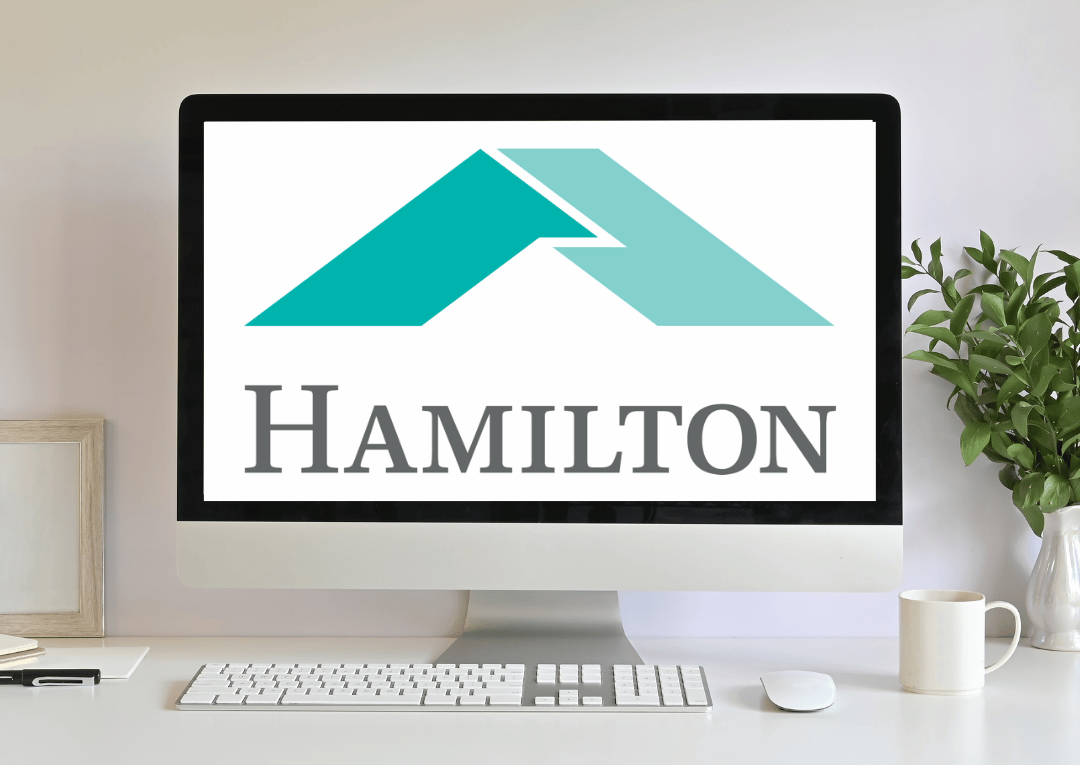Today’s quiet overachiever in reinsurance crushed Q2 and hasn’t looked back, but the real money might be made on the next squall.
Premiums are climbing, buybacks are circling, and if this pulls back below $23, it could be the cleanest value setup in the sector.

Smart Money Shifts (Sponsored)
The Fed is uncertain. The Trade War is rattling markets. Retail investors are panicking, but smart money is moving in.
They’re quietly loading up on 3 consumer defensive plays:
Utilities – Renewable energy leader at a 42% discount, 8% yield.
Staples – 18 household brands, 54-year dividend streak, sales up 19%.
Healthcare – Telehealth disruptor with 2,300+ hospital partners, 3x revenue growth.
This isn’t speculation - it’s the only survival strategy in today’s market.
Get all 3 tickers, growth catalysts, and buy zones in my free report: “3 Defensive Stocks to Own Now.”
[Claim Your Free Copy] before it’s behind a paywall.


Why the Market Overcorrected and What Comes Next
Hamilton’s (NYSE: HG) Q2 was a mic drop: 26% revenue growth, clean beats across the board, and an 11.2% pop post-earnings.
But the market isn’t naïve; reinsurance may be the strongest house on the block, but it still lives in the neighborhood of premium deceleration.
For years, hard market tailwinds made HG an easy trade: rising rates, fat margins, and smooth underwriting wins.
That setup hasn’t vanished, but the throttle’s easing.
Management is still guiding for double-digit premium growth, but the velocity is cooling, and when a near-perfect quarter earns a collective shrug, it’s clear the tone is shifting from momentum to “show me what’s next.”
The stock still trades at a reasonable multiple, but the next leg up will take more than clean execution.
A capital return announcement, a specialty expansion, or another surge in premium growth could all reset the narrative and keep momentum building.
Action: Look to accumulate below $23. A new leg higher requires one of two things: premium growth stabilization or a capital return catalyst to revive the story.

Options Made Simple (Sponsored)
The market’s wild swings—like a 427‑point drop one day and a 619‑point rally the next—are enough to make anyone’s head spin.
With Washington trade talks and Fed policy chatter fueling volatility, you need a proven playbook.
Grab our FREE e‑book, Mastering Options Trading: A Beginner’s Guide, and discover:
Market‑proof strategies for up, down, or sideways moves
Easy income tactics that work in any climate
Smart discount buys to snag top stocks at lower prices
Advanced setups favored by pros for rapid growth
Dividend‑option combos that lock in extra premium
Don’t let this chaos pass you by.

Two Sigma’s Quiet Power Move
Hamilton isn't just riding reinsurance tailwinds; it has a stealth advantage that most competitors can’t match: its investment engine is powered by the quant giant Two Sigma.
That partnership has fueled above-average portfolio returns, helping HG grow its book value even as underwriting results across the sector return to normal.
Sure, management has flagged that returns will likely normalize, but even at baseline, this setup gives Hamilton a unique edge.
Most peers rely almost entirely on premium growth. HG has two levers to pull.
Premium growth through disciplined underwriting and expansion in specialty lines
Investment income generated by the Two Sigma-powered portfolio
If investors start to believe that Two Sigma can consistently deliver above-peer income alongside stable premium growth, the re-rating argument gets real.
Action: Keep an eye on consistent investment outperformance and momentum in specialty premiums.
If both trends stay intact, the setup favors a patient re-rating, especially for buyers waiting on a cleaner entry below $23.

Opportunity Knocks (Sponsored)
“Nice gains” are fine.
But if you’re serious about wealth-building, you don’t want fine—you want transformational.
That’s why our analysts went beyond the noise, screening thousands of companies to uncover 5 rare setups with the potential to deliver massive growth.
Inside this brand-new special report, you’ll discover:
Stocks with rock-solid fundamentals for long-term confidence
Technical indicators suggesting explosive upside ahead
A clear breakdown of why each company made the cut
And here’s the kicker: past editions of this report have uncovered stocks that went on to post extraordinary runs of +175%, +498%, even +673%.¹
While no one can guarantee the future, history shows these reports have consistently spotted big opportunities before they took off.
For a limited time, you can download 5 Stocks Set to Double—absolutely free.
But there’s urgency: this free access expires at midnight tonight.
[Claim your free copy before time runs out]
Don’t settle for “nice.” Go after what could be extraordinary.
*This free resource is being sent by Zacks. We identify investment resources you may choose to use in making your own decisions. Use of this resource is subject to the Zacks Terms of Service.
*Past performance is no guarantee of future results. Investing involves risk. This material does not constitute investment, legal, accounting, or tax advice. Zacks Investment Research is not a licensed dealer, broker, or investment adviser.

Specialty Reinsurance Is the Quiet Climber
If Hamilton has a cheat code, it’s specialty reinsurance.
That segment grew gross written premiums 18% in Q2 — faster than the company overall — while delivering an 88% combined ratio.
That’s not just good - it’s margin territory most reinsurers would kill for.
Why Specialty Keeps Gaining Ground
Specialty reinsurance brings better margins, steadier results, and less capital intensity than traditional cat-heavy lines.
That’s why management is leaning into it, and why the segment’s premium share is rising fast.
Specialty now makes up 35% of premiums, up from 28% last year, and management isn’t hiding where they want to scale. It’s smart.
These lines tend to offer better margins, less volatility, and cleaner capital usage than the traditional property-cat grind.
If this mix shift continues, it could quietly push earnings 10–15% above Street expectations over the next year and a half.
Action: Focus on how much earnings contribution comes from specialty and how efficiently it’s being underwritten.
If that mix continues to improve, the story could shift from a value name to a quiet outperformer.

Don’t Let These Undervalued Stocks Slip Through Your Fingers!
We now send our favorite value picks via text, too, so you’ll get the same actionable news without having to open your inbox.

Buybacks and Passive Flows Could Quietly Re-rate the Story
Hamilton hasn’t pulled the trigger on a buyback yet, but the clock’s ticking.
Net income jumped 32% last quarter, and operating cash flow hit $145M, a post-IPO high.
Toss in the recent AM Best upgrade to A- and you’ve got a balance sheet that can fund capital returns without slowing growth!
A $50–$75M repurchase wouldn’t shock anyone if underwriting strength holds.
And with HG’s market cap creeping toward $2.3 billion, that $3 billion threshold for passive fund inclusion is starting to come into play.
In financials, these kinds of structural catalysts can re-rate names fast, especially when the fundamentals are already ahead of the multiple.
Action: Watch for formal buyback announcements or signs of passive fund inclusion.
Structural catalysts like these can unlock upside even without big earnings surprises.

Tailwinds This Strong Don’t Fade Quietly
Reinsurance is still riding one of the longest hard markets in over a decade, and the breeze hasn’t let up.
Property-cat rates are holding 10–15% higher year over year, while carriers remain disciplined on capacity.
Add in a 10-year Treasury hovering near 4.1%, and reinsurers are finally getting paid to wait. Hamilton is built to capitalize.
Its diversified footprint across Bermuda, Lloyd’s, Ireland, and the U.S. gives it wide pricing exposure and smoother catastrophe risk.
If current conditions extend into 2025, HG doesn’t need a narrative reset; it needs to keep showing up.
What’s Working in Hamilton’s Favor:
Strong pricing power across core property-cat and specialty lines.
Elevated reinvestment yields are lifting portfolio income.
Geographic diversity that spreads risk and captures more market opportunities.
Discipline across the sector is keeping capital tight and rates high.
Action: Track premium rate momentum and reinvestment yields.
If this setup holds, Hamilton could keep compounding with minimal drama, and sub-$23 entries may not stick around long.

Poll: Who famously said “Compound interest is the eighth wonder of the world”?

Risks and the Case for a Re-Rating
No setup is bulletproof. Hamilton’s execution has been sharp, but a few pressure points remain:
Cat Risk Always Looms: One bad hurricane season could blow through the modeled $200–$250 million loss buffer and drag down combined ratios fast.
Bigger Players Still Set the Pace: Giants like RenaissanceRe and Everest still have scale on their side. If pricing softens, Hamilton could find itself reacting.
Growth Is Cooling: Q2’s 26% revenue surge was a standout, but comps only get tougher from here as premium growth and investment income normalize.
Here’s where the rerating potential comes in.
The stock trades at 7.8x forward earnings, below the 9 to 11x range where peers sit, and its EV/EBITDA is still lagging despite better ROE trends.
With stable margins and clear capital return signals, this setup doesn’t require a new narrative. It needs recognition for the one already in motion.
Action: Track catastrophe risk, monitor premium growth consistency, and watch for confirmation on buybacks or dividends.
If execution stays solid, the multiple could shift closer to peers, opening the door to 15–30% upside.

Final Word: Betting on the “Steady Compounders”
Hamilton Insurance Group isn’t chasing hype. It’s a disciplined underwriter with a strong investment engine, now trading near fair value after a breakout Q2.
Premium growth hit records, margins held firm, and the Two Sigma portfolio continued to outperform.
This remains a steady compounder with more to prove. The next move likely depends on stronger capital return signals and confirmation that Q2 momentum can hold.
If those pieces line up, and the stock cools from current levels, the risk-reward heading into 2025 starts to look more favorable.
Action: Wait for a pullback below $23; upside improves if capital returns accelerate and premium growth holds, setting up a mid-to-high $20s re-rating into 2025.

Setup Scorecard
Entry Window: Best risk/reward lives south of $23, where the upside skew starts to tilt in your favor.
What Moves It: Double-digit premium growth sticking around, capital returns finally showing up, and the Two Sigma engine doing what it does best: quietly compounding.
Upside Case: A clean re-rate into the mid-to-high $20s if growth steadies and the Street starts closing that valuation gap.
What Could Break It: A spike in catastrophe losses or a sharp drop in premium pricing could knock margins and stall the story. Keep a close eye on the macro.

That's our coverage for today; thanks for reading! Reply to this email with feedback or any value names you'd like us to dig into.
Best Regards,
—Noah Zelvis
Undervalued Edge




